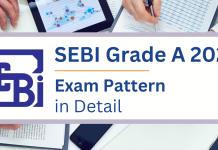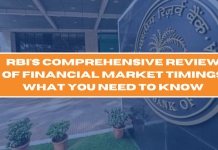The Securities and Exchange Board of India (SEBI) introduced new margin norms effective from September 1, 2021, aimed at enhancing transparency and reducing excessive speculation in the stock market. These changes reflect SEBI’s ongoing commitment to protecting investors and ensuring fair practices within the market. Today we will delve into the reasons behind these regulations, their implications, and their key aspects.
In this blog, we are going to discuss those Margin norms introduced by SEBI in 2021 and much more about them. We recommend you read this blog till the end and get the best out of it.

Introduction to SEBI’s New Margin Norms
The new Margin norms were introduced in a phased manner. The introduction process began in December 2020 and was fully implemented in September 2021. These rules are a token of the shift in the tradition of the Margin management in the Stock Market. This ensures better stability and encourages the reduction of risk associated with high leverage.
Why Were the New Margin Norms Introduced?
Enhancing Transparency
One of the primary reasons for introducing these norms was to increase transparency in the stock market. The major objective of SEBI comprises the assurance that all market participants are on a level playing field, and hence reducing unfair practices and speculative trading.
Reducing Excessive Speculation
High leverage often leads to excessive speculation, which can destabilize the market. By tightening margin requirements, SEBI aims to curb speculative trading, thus promoting a more stable and secure market environment.
Investor Protection: These norms are designed to protect retail investors from the risks associated with excessive leverage. By ensuring that investors maintain adequate margins, SEBI aims to safeguard their interests and reduce potential losses in volatile market conditions.
Key Aspects of SEBI’s New Margin Norms
Peak Margin Reporting
Under the new norms, brokers are required to report the peak intraday margin of their clients to the stock exchanges. This ensures that clients maintain the necessary margins throughout the trading session, not just at the end of the day.
Phased Implementation
SEBI implemented these norms in four phases. Initially, brokers had to collect a minimum of 25% of the peak margin requirement from their clients. This was gradually increased to 50%, 75%, and finally 100% by September 2021. This phased approach allowed market participants to adjust to the new requirements smoothly.
Penalty for Non-Compliance
To enforce these norms, SEBI has introduced penalties for brokers who fail to collect the required margins from their clients. This ensures strict adherence to the rules and discourages non-compliance.
Client Margin Collection
The new norms mandate brokers to collect margins upfront from clients before executing trades. This ensures that clients have sufficient funds to cover potential losses, thereby reducing the risk of default.
Changes in Pledge/Unpledge Process
SEBI has streamlined the process for pledging and unpledging shares. Clients can now pledge shares directly with the Clearing Corporation, ensuring greater transparency and reducing the risk of misuse of client securities.
Impact on Derivatives Trading
The norms have a significant impact on derivatives trading, where leverage plays a crucial role. By increasing the margin requirements, SEBI aims to reduce excessive speculative positions and promote a more stable derivatives market.
Implications of the New Margin Norms
Increased Compliance Costs
Brokers may face higher compliance costs due to the need for enhanced reporting and monitoring of client margins. However, this is a necessary step to ensure market stability and investor protection.
Reduced Liquidity
The increased margin requirements may lead to reduced liquidity in the market, as traders may scale back their positions. While this may impact short-term trading volumes, it is expected to result in a more stable and secure market in the long run.
Better Risk Management
By ensuring that clients maintain adequate margins, brokers can better manage their risks. This reduces the likelihood of defaults and promotes a healthier market environment.
Investor Confidence
The new norms are likely to boost investor confidence, as they ensure greater transparency and reduce the risks associated with high leverage. This, in turn, can attract more retail investors to the market, contributing to its growth.
Conclusion
SEBI’s new margin norms represent a significant step towards enhancing transparency, reducing excessive speculation, and protecting investors in the stock market. By requiring brokers to collect and report margins more rigorously, SEBI aims to create a more stable and secure market environment. While these changes may pose challenges for brokers and traders in the short term, they are expected to result in a healthier and more resilient market in the long run.
As investors adapt to these new norms, they can look forward to a market that is better regulated, more transparent, and less prone to the risks associated with high leverage and speculative trading.
Prepare for SEBI Grade A Exam with ixamBee
ixamBee is rather an important tool for those keen on the stock markets and are preparing for SEBI Grade A recruitment exams. The platform provides important insights into the SEBI Grade A Exam Pattern and Syllabus, and helps them in establishing a strong groundwork for their preparation journey. Aspirants can also make use of ixamBee’s SEBI Important Questions platform which helps students prepare for the upcoming SEBI exams with important questions that are likely to be asked. Along with that, ixamBee’s SEBI Grade A Online Course caters to diverse streams, including Legal, Information Technology, Research, and Official Language. Crafted by seasoned faculty members, the course offers top-notch guidance through video lectures, live classes, and practice quizzes, tailoring the learning experience to each stream’s specific requirements, including BeePedia for the General Awareness segment.














